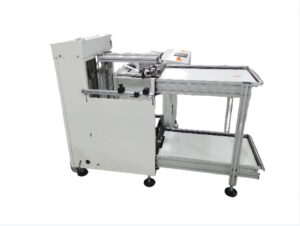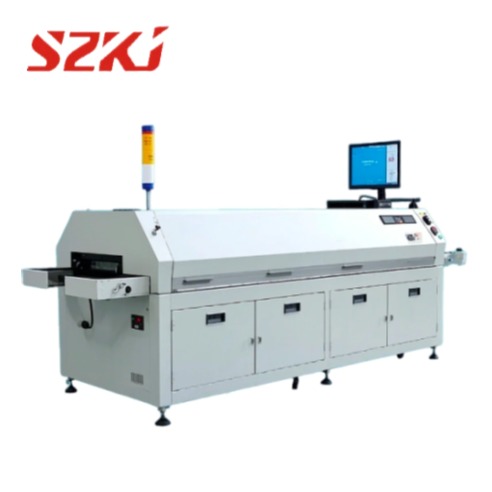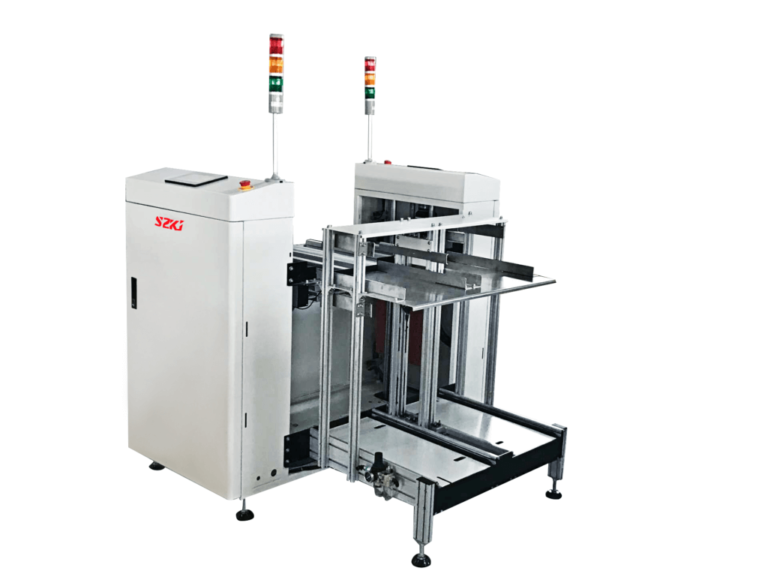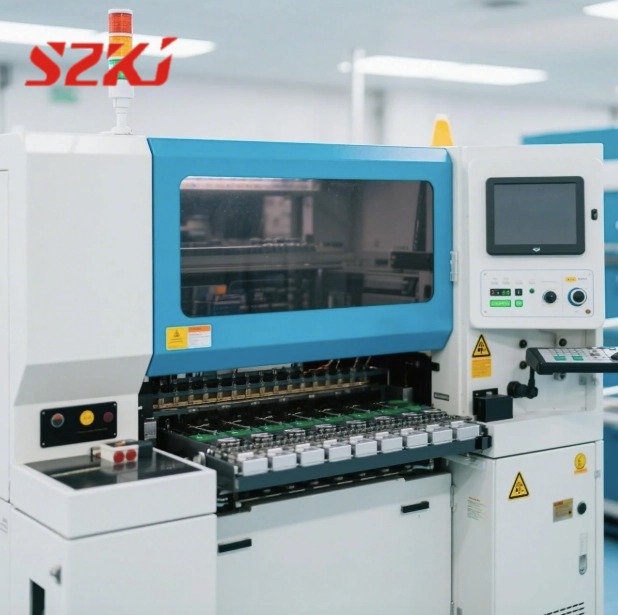Table of Contents
ToggleSurface-mount technology (SMT) has completely changed the electronics manufacturing industry by making it possible to produce devices that are more compact, reliable, and economical. SMT requires physically attaching electronic parts to a printed circuit board’s (PCB) surface.
The pick-and-place procedure is an essential phase in SMT assembly. It consists of carefully removing electronic parts, including integrated circuits, resistors, and capacitors, from their corresponding feeders and positioning them onto the appropriate pads on the PCB.
This article will review the essential parts of a pick-and-place machine and how they will contribute to future developments in SMT manufacturing.
 Necessary Components of a Pick and Place Machine
Necessary Components of a Pick and Place Machine
Placement Head: A robotic arm that picks up and positions parts thanks to specific nozzles.
Feeder System: Several feeder types store and transport components to the placement head, including bulk feeders, tape and reel feeders, and tube feeders.
Conveyor System: This system enables accurate component placement by moving the PCB through the machine.
Key Steps of the Pick and Place Process in SMT Manufacturing
Component Feeding:
- Component feeding involves storing components in various feeder types, including bulk, tube, tape, and reel feeders.
- The feeder system then sends the components to the placement head as required.
Component Picking:
- The component to be positioned is identified and located using a vision system.
- Using a nozzle or vacuum pickup, the placement head retrieves the part from the feeder.
Component Placement:
- The placement head precisely positions aligns, and orientations the component on the PCB and also places it onto the appropriate pad.
The Importance of Precision in SMT Manufacturing
The precision and speed of the Pick and Place process are crucial in SMT manufacturing. Accuracy is necessary to guarantee:
Component Alignment: Properly placing components on the PCB pads is essential.
Component Orientation: The right orientation of components is essential for their efficient operation.
Component Spacing: Correct component spacing is essential to preventing short circuits.
 Maximize Your SMT Manufacturing with Essential Tools
Maximize Your SMT Manufacturing with Essential Tools
Invest in these necessary SZKJ peripheral equipment to maximize your SMT production line. Using these tools, you can improve your SMT manufacturing line’s overall performance, quality, and efficiency.
PCB Cleaning Machine: A PCB cleaning machine ensures reliable soldering by eliminating impurities from PCBs. The PCB-350-SZ reduces printing flaws, including inadequate solder, air welding, and poor soldering quality, by guaranteeing a spotless, debris-free surface.
Solder Paste Inspection System: Prevents any assembly problems by detecting flaws in solder paste deposition.
The Stencil Cleaning System: It keeps the stencil clean, guaranteeing precise and reliable solder paste printing.
Component Inspection System: The Component Inspection System keeps defective parts off the PCB by checking components for flaws.
Conclusion
In SMT manufacturing, the pick-and-place procedure is an essential phase that guarantees accurate and effective PCB assembly of electronic components. As the electronics sector develops, the Pick-and-Place procedure will continue to be an essential tool for innovation and technological development.
Visit SZKJ to check out a variety of SMT peripheral equipment and learn more about the latest developments in pick-and-place technology.

-768x768.jpg)


